8 Best Mirrorless Cameras In 2024 – Reviews & Top Picks
Last Updated on
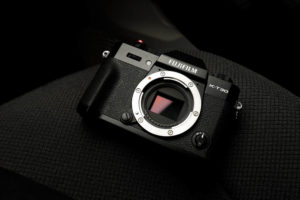
Mirrorless cameras are special in the sense that they offer more features than your typical camera. Most of them are compact, lightweight, portable, and come in ergonomic designs that were unimaginable back in the day.
We’re convinced these cameras are the future of the industry, especially now that we’re seeing newer models with better build quality and more lens options.
If the portability and image quality of a mirrorless camera sounds good to you, the following eight choices are some of our favorites. Check out our reviews below.

A Quick Comparison of Our Winners (2024)
| Image | Product | Details | ||
|---|---|---|---|---|
| Best Overall |
 |
Canon EOS R6 Full-Frame Mirrorless Camera with 4K Video |
|
CHECK PRICE |
| Best Value |
 |
Olympus OM-D E-M10 Mark III Camera Body |
|
CHECK PRICE |
| Premium Choice |
 |
Sony A7 III (ILCE M3K/B) Interchangeable-Lens Camera |
|
CHECK PRICE |
 |
Fujifilm X-T4 Mirrorless Digital Camera XF18-55mm Lens Kit |
|
CHECK PRICE | |
 |
Sony Alpha A6600 Mirrorless Camera |
|
CHECK PRICE |
8 Best Mirrorless Cameras In 2024
1. Canon EOS R6 Full-Frame Mirrorless Camera with 4K Video – Best Overall
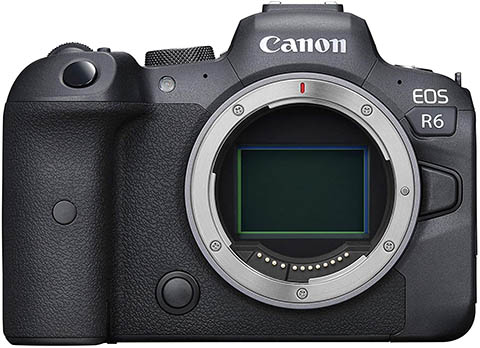
| Battery weight: | 2.82 g |
| Video Resolution: | 4K |
The EOS range from Canon is well-known among professional and novice photographers alike, and the R6 full-frame mirrorless is arguably the best 35mm mirrorless camera in the market. We can already tell you’re wondering why a 20-megapixel resolution camera is a top pick, and the answer is simple: it has a full-frame sensor that utilizes whatever amount of light that you throw at it to produce sharp images.
The image stabilization makes it ideal for photographers or videographers who prefer shooting handheld, and image noise is not an issue at high ISO settings. Moving objects will always stay in focus, courtesy of the awe-inspiring autofocus system. And yes, they’ll be tracked to the edge of the frame.
We know you’re probably well acquainted with autofocus systems, and this camera comes with different AF area modes. They add a degree of complexity into the equation, as they offer zone and spot focusing, together with eye and face detection.
All videos can be captured in 4K, but be careful, as it tends to cause the camera to overheat with time.
- Full-frame sensor
- Image stabilization
- High ISO settings
- Autofocus system with area modes
- Eye and face detection
- 4K video
- Overheats over time in video mode
2. Olympus OM-D E-M10 Mark III Camera Body – Best Value
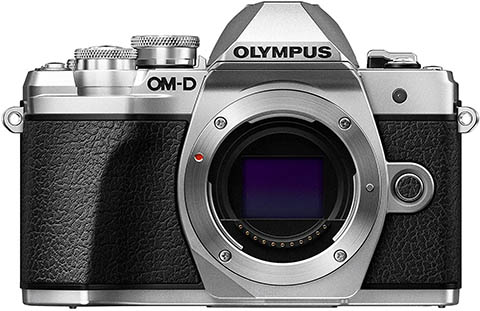
| Battery weight: | 0.5 g |
| Video Resolution: | 1080p |
The OM-D E-M10 Mark III has been designed with a micro-four-thirds sensor. These types of sensors are smaller than the full format or APS-C sensors. Some people may think that that’s a disadvantage, and it could be if you’re not looking for a camera that’s compact or lightweight.
Olympus knows small sensors don’t provide optimal results when it’s time to work in low-light conditions, so they made sure they installed the 5-axis IBIS feature. This will guarantee that your shots aren’t adversely affected by low-light.
The 16-megapixel resolution may be too low for some, but the brand added a few extra lenses to work in tandem to ensure its low-megapixel sensors don’t compromise the image quality. We assure you that all shots will not only be sharp, but also crisp.
We see no reason to doubt this since its previous model—the OM-D E-M10 Mark II—also had advanced features that could produce quality images. The main improvements in this new model are the 4K video and extra autofocus points. Everything else, including the TruePic VIII engine responsible for image processing, has been lifted from the Mark II.
Our only concern is with the inconsistent autofocus. Don’t get us wrong, it’s still efficient as it used to be. However, it’s indecisive in low-light situations. Other than that, it’s stylish, has Wi-Fi-connectivity, incredible ergonomics, and is weather-sealed.
- Great value for money
- Micro-four-thirds sensor
- Water-sealed
- Wi-fi connectivity
- Lightweight
- Extra autofocus points
- Inconsistent autofocus
3. Sony A7 III (ILCE M3K/B) Interchangeable-Lens Camera – Premium Choice
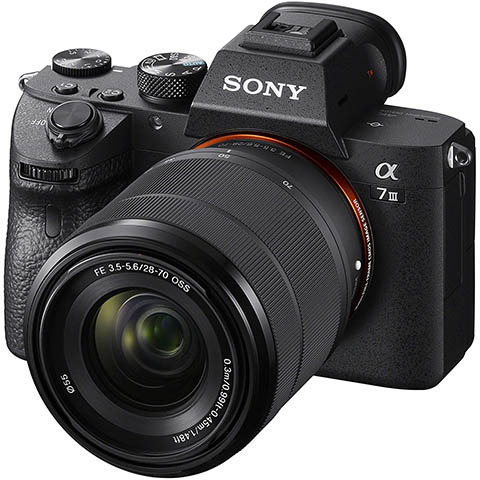
| Battery weight: | 1.5 g |
| Video Resolution: | 2160p |
The Sony A7 III could have taken the top spot if it came with a price tag that was a little bit more appealing to consumers. It’s probably one of the best mirrorless cameras on the market, seeing as it offers so much and then some. With the help of the 35mm-frame sensor, this camera will produce images that have some of the sharpest details and the least background noise.
The prime goal of this model was to provide shooters with the ultimate user experience, and it doesn’t disappoint. Its control settings are easily accessible, the screen is a tilting touchscreen, and the grip is ergonomic and comfortable. Regarding the battery life, it will give you approximately 700 shots per charge, possibly more.
Like its predecessors, it has a remarkable autofocus system, a dual SD card slot, and a weather-resistant build.
- 35mm-frame sensor
- Produces crystal clear images
- Long battery life
- Reliable
- Dual SD slot
- Weather-resistant
- Tilting touchscreen
- High price tag
4. Fujifilm X-T4 Mirrorless Digital Camera XF18-55mm Lens Kit
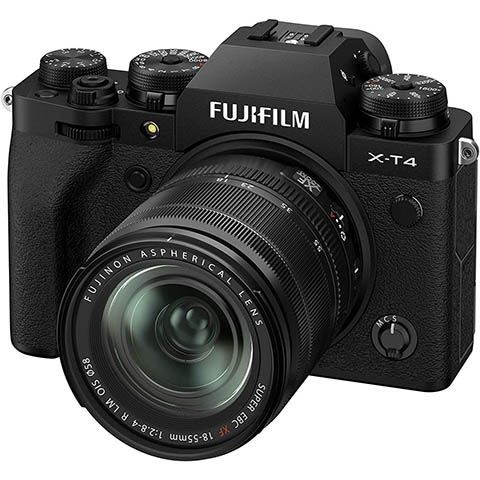
| Battery weight: | 80 g |
| Video Resolution: | 4K |
The Fujifilm X-T4 is also quite expensive, but not as expensive as the Sony A7 III. It has everything you need to improve your photography with a sensor that puts out color-accurate pictures, irrespective of the lighting situation.
You can add flair to your photography by playing around with water, or shooting your sessions in the rain with this weather-sealed model. It has the perfect grip, so don’t worry about it falling. And even if it does, that rugged build will protect it from the impact.
This Fujifilm version has a magnificent electronic viewfinder. You shouldn’t confuse this feature with the optical viewfinder. While the latter shows you the true image, the former has to first convert light into a digital image before displaying it on a screen. In other words, there’s always a slight lag in the process.
The screen is a tilt-and-swivel, and the videos being captured will be 4K. It has image stabilization in case you need it, too. On the flip side, using the controls will require some getting used to, particularly if you’ve never used manual dials before.
- Water-resistant
- Rugged build
- Electronic viewfinder
- Tilt-and-swivel screen
- High-quality video
- Not beginner-friendly
- Costly
5. Sony Alpha A6600 Mirrorless Camera
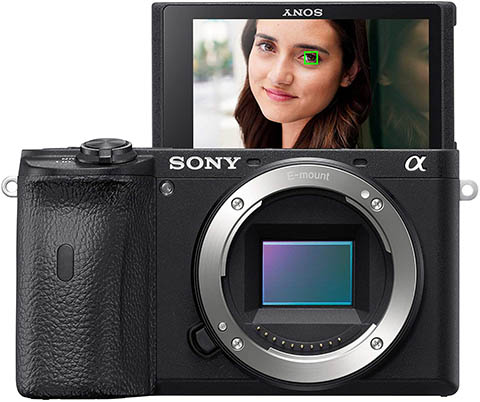
| Battery weight: | 81.6 g |
| Video Resolution: | 4K |
The Alpha A6600 model will give you more than 800 images per charge. It has a very long battery life, remarkable grip, 24MP resolution, and more importantly, 4K video capture. Tracking different objects will be a breeze, as the design has an advanced autofocus system.
In terms of image quality, it’s no secret that Sony’s color output has always been one of the best in the game. Not once have we heard users complain about pictures coming out dull with a Sony Alpha—be it RAW or JPEG images.
The only limitation that we found here was in the single UHS-I SD card slot. A single slot means buffer clearing is time-consuming.
- Advanced autofocus system
- Full-frame sensor
- Flippable LCD screen
- Long battery life
- 24MP resolution
- Crispy images
- Single UHS-I SD card slot
6. Fujifilm X-T30 Mirrorless Digital Camera
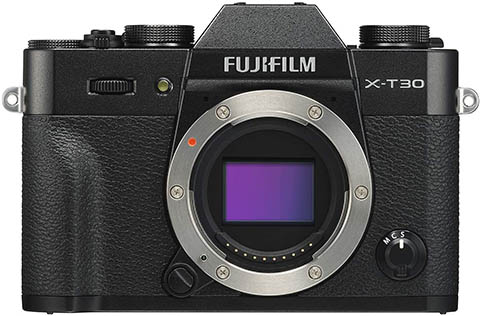
| Battery weight: | 47 g |
| Video Resolution: | 4K |
The X-T30 is an affordable mirrorless option that has several awesome features. The ergonomics might not appeal to users who have large hands, but its portability index is quite high. You won’t even feel the need to reach for a strap.
What’s more, you’ll be getting a camera that has an autofocus that is very accurate and fast. Switch the controls to sports mode, and you’ll be working with speeds of up to 30fps. The video quality is 4K and can be directly recorded to a 10-bit or 8-bit external recorder or SD card, respectively.
The battery life isn’t as long as we would have liked, and it only comes with a single UHS-I card slot. We don’t know about you, but we feel like Fujifilm has to improve those two departments.
- Affordable
- Ergonomic design
- Portable
- Accurate, fast autofocus
- 4K videos
- Short battery life
- Single UHS-I SD slot card
7. Canon EOS RP Full Frame Mirrorless Vlogging Portable Digital Camera
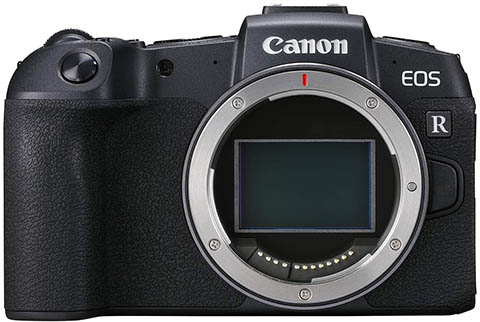
| Battery weight: | 45 g |
| Video Resolution: | 2160p |
The Canon EOS RP has a really small battery, which is disappointing because it’s not powerful enough to serve more than 250 shots per charge. Its Dual Pixel autofocus system is great, but we don’t know why they didn’t design it to work in 4K videos. Nonetheless, the camera is one of the best for shooting in low-light settings and is beginner-friendly.
This particular model has front and rear dials, in addition to the usual settings. They’ll make your work a lot easier, especially while adjusting the aperture and shutter modes. You’ll definitely love the 26.2-megapixel resolution, even though it somehow downgrades the device’s burst speed.
The type of lens that it relies on is the RF lens option. And that’s perfect considering it’s not as costly as the other alternatives. Should you decide to use the EF or EF-S lens system, you’ll first have to invest in an adapter.
- Utilizes the RF lens system
- Dual-pixel autofocus system
- Ideal for beginners
- Has front and rear dials
- 2 megapixels
- Short battery life
- Needs an adapter to use the EF or EF-S lens system
8. Nikon Z6 Full-Frame Mirrorless Camera Body
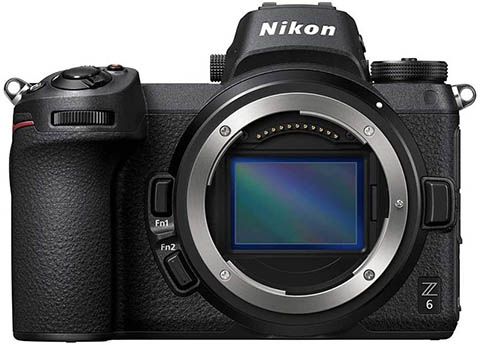
| Battery weight: | 2 g |
| Video Resolution: | 2160p |
“Ruggedness” is the word that comes to mind whenever we think about the Nikon brand. And it didn’t disappoint with this Z6 Full-Frame Camera. The modes and menus are dead ringers to the DSLR models to make it easier for DSLR users to adapt quicker, including a top-plate LCD.
The lens mount is different from the typical F-mount. Nikon had to let that one go so that they could mount an upgrade that allows more light to get to the sensors—the Z-mount. The Z6 build design has an excellent electronic viewfinder, with great resolution.
If you’re looking to shoot in burst mode the refresh rate is fairly slow, averaging a black-out time of 0.0166 seconds in between shots.
- Z-mount
- Top-plate LCD
- Rugged build
- Great resolution
- Electronic viewfinder
- Slow refresh rate

Buyer’s Guide: How to Pick the Best Mirrorless Camera
Deciding which type of mirrorless camera is best suited for your needs can be a challenge, even if you’re experienced in this industry. There are so many considerations to take into account, and we’ll discuss a few below.
Price
More often than not, you’ll find that the best mirrorless cameras are relatively pricey. And that’s understandable considering their capabilities are always off the charts, with durability that’s unrivaled.
Mirrorless camera models designed for intermediate or professional shooters tend to be pricier because they come with additional accessories and fewer automatic controls. The way they process the data input is also a lot faster, and so is their autofocus.
By the way, nearly all of them are heavier than a brick. They have many interchangeable lenses available designed to provide the ultimate experience in low-light environments. Their full-frame sensors contribute to that weight as well, together with the material used during construction.
Lenses
The lens is a vital factor when shopping for any type of camera—not just a mirrorless camera. Professional shooters most likely take the initiative to invest in their own lens systems beforehand, since they already know their way around their gear. But unfortunately, rookies don’t have this option.
Without a good lens, you’ll never be able to produce images that are of good quality. And if portability is a factor that you take seriously, you’ll have to look for a lens system that matches any camera considered lightweight and/or compact. Lenses are long-term investments and most of them will outlast the camera.

Sensor size
The sensor size usually impacts the image quality, just as much as the lens does. This factor will also dictate the device’s performance in a low light setting, its focal length, the kind of lens that’s compatible with it, and the general size of the camera. Ordinarily, these types of cameras have one of three sensor sizes:
- Micro four-thirds
- APS-C
- 35mm format/full frame
The standard sensor size is the 35mm format. It’s meant to be used by professionals who understand the inner workings of a mirrorless camera, as they can accommodate more pixels. “Accommodating more pixels” is just a fancy way of saying it has the ability to capture unparalleled data, thereby producing higher image quality. That and the fact that it has an uncanny way of reducing background noise in low-light pictures.
The micro four-thirds and APS-C formats are mostly referred to as “cropped” formats. This is due to the fact that they are smaller than the 35mm format, which is considered the original sensor size that replicated 35mm film. These two sensors will give you the option of working with compact/lighter cameras that are ideal for travelers or users who want to take pictures discreetly.
The disadvantage is that they don’t guarantee the same level of background compression as the 35mm format, plus low-light performance and picture quality.
Construction
The body of any camera you pick up will either be made of polycarbonate or metal. Some are a combination of both, but those can be costly.
The point is that metal bodies are the best if you want a camera that’s weather-resistant and offers greater durability. You can use it to shoot in the rain or dust conditions, and not have to worry about its integrity being compromised. But you’ll have to make a trade-off between that and working with a weighty camera.
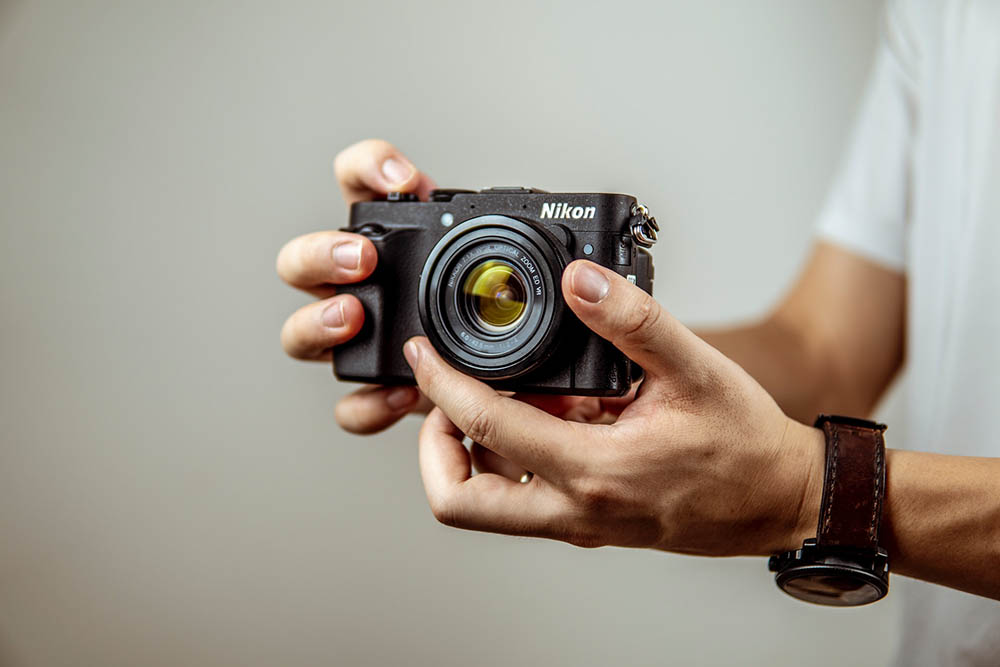
Portability
Speaking of weight, are you planning to shoot in one position or will you be moving around with the camera? That’s something to think about if you don’t want the camera’s size or weight to get in the way of whatever you’re trying to capture. Portability shouldn’t be a concern for portrait studio photographers, but the same can’t be said about wildlife, architects, or on-location professionals.
Resolution
Resolution is normally measured in megapixels(MP). The advancements in technology have made it such that most modern cameras come with a resolution of 12MP or higher. Of course, the responsible thing to do is to always check before making the purchase, but we’re almost certain that you’ll get the right one. The only thing that you need to remember is the higher the resolution, the higher the price.

Conclusion
We’d like to end the article by reminding you our overall pick is the Canon EOS R6 Full-Frame Mirrorless Camera. It has all the features you’d want in a mirrorless camera, and more. The Olympus OM-D E-M10 Mark III is our best value camera. You’ll for sure feel like your money was well spent, once you get your hands on this bad boy. And finally, we have the Sony A7 III (ILCE M3K/B) Interchangeable-Lens Camera. It could have been our number one pick, but the price tag on it was just too high.
We hope our in-depth reviews have helped you find the best mirrorless camera for your needs.
Featured Image Credit: Neeraj Kumar, Unsplash
Table of Contents
- A Quick Comparison of Our Winners (2024)
- 8 Best Mirrorless Cameras In 2024
- 1. Canon EOS R6 Full-Frame Mirrorless Camera with 4K Video – Best Overall
- 2. Olympus OM-D E-M10 Mark III Camera Body – Best Value
- 3. Sony A7 III (ILCE M3K/B) Interchangeable-Lens Camera – Premium Choice
- 4. Fujifilm X-T4 Mirrorless Digital Camera XF18-55mm Lens Kit
- 5. Sony Alpha A6600 Mirrorless Camera
- 6. Fujifilm X-T30 Mirrorless Digital Camera
- 7. Canon EOS RP Full Frame Mirrorless Vlogging Portable Digital Camera
- 8. Nikon Z6 Full-Frame Mirrorless Camera Body
- Buyer’s Guide: How to Pick the Best Mirrorless Camera
- Conclusion
About the Author Robert Sparks
Robert’s obsession with all things optical started early in life, when his optician father would bring home prototypes for Robert to play with. Nowadays, Robert is dedicated to helping others find the right optics for their needs. His hobbies include astronomy, astrophysics, and model building. Originally from Newark, NJ, he resides in Santa Fe, New Mexico, where the nighttime skies are filled with glittering stars.
Related Articles:
Binocular Magnification Chart: Numbers & Distances Compared
What Is the Best Binocular Magnification for Hunting? Optical Features Explained
When Were Binoculars Invented? History, Today & Future
How to Clean a Refractor Telescope: Step-by-Step Guide
How to Clean a Telescope Eyepiece: Step-by-Step Guide
How to Clean a Rifle Scope: 8 Expert Tips
Monocular vs Telescope: Differences Explained (With Pictures)
What Is a Monocular Used For? 8 Common Functions



